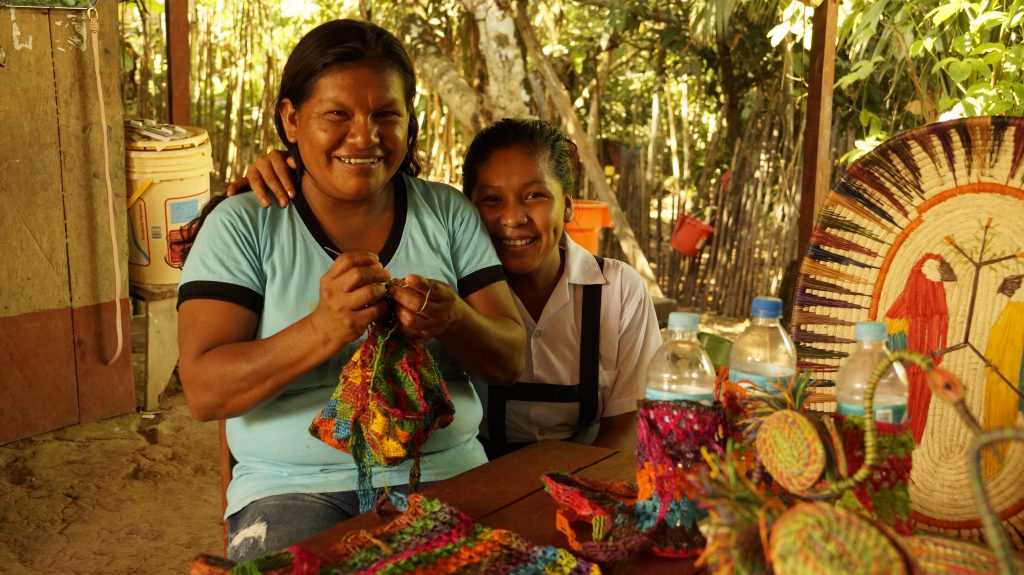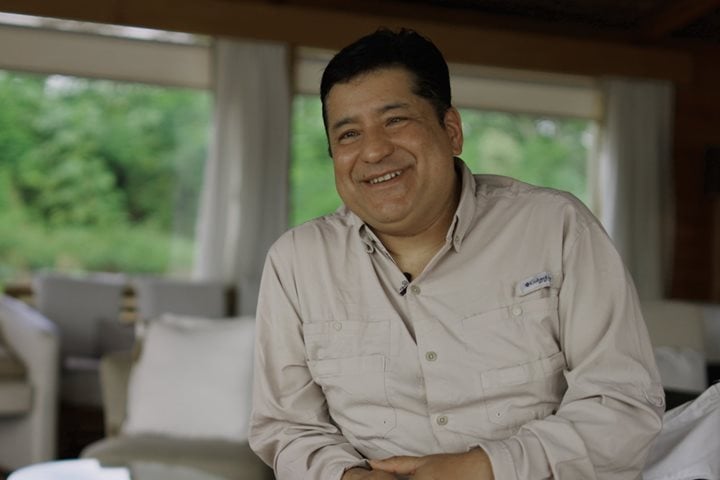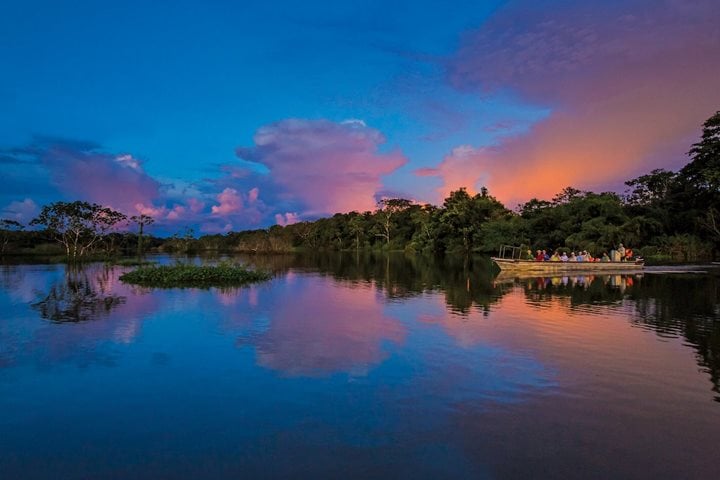Call +1.800.397.3348 or contact your travel advisor
Along the banks of the Marañon River, a main tributary of the Amazon, you’ll find the community of San Francisco. Here, indigenous women are learning critical skills and strategies needed to support their families with help from Minga Peru, a non-profit organization now in its 20th year. To date, Minga has trained more than 250 artisans from 30 communities via workshops and radio programming, teaching them to design and sell sustainable handcrafts that generate much-needed income. Read on for three of their inspiring stories: Get Inspired By Photos, Videos, Webinars, Stories, And Exclusive Offers. Sign Up
Zarela Huanuiri
“Learning to make crafts gave me the opportunity to dream bigger and know that I could have my own business.”
My son Reiner was attending Minga Peru’s workshops and would share with me all of the amazing things he learned like self-esteem, women empowerment, teen pregnancy prevention and many others. He was so amazed by these workshops that he invited me to join him.
At first, I was unsure, but then my neighbors who also attended told me that Minga was developing new craft-making workshops to learn strategies for selling crafts to tourists visiting our communities. I had some experience making crafts but never thought of the idea that this could generate income for me and my family. When I heard this I was very impressed and decided to participate.
In my workshops I learned how to make various designs (bread boxes, hats, purses, and much more), and I learned that most handicrafts were made of the plant fibers of the Chambira palm tree. I was soon encouraged to start a business based on all that I had learned. But then I began to notice that our main source for making handicrafts, Chambria was becoming scarce in most communities in the Peruvian Amazon because of deforestation and poor agricultural practices. To have access to this tree, artisans had to travel long hours by boat or by foot.
I said to myself, “if I want to make my own business as an artisan woman and ensure that other artisans can have access to this resource, I need to change how people are using the Chambira palm tree and other natural resources in my community.”
Then I found out that Minga was also providing training workshops on how to create eco-friendly income-generating projects. I quickly began attending those and learned sustainable ways to plant and use the palm tree. I felt so empowered with my new skills that I worked to obtain a piece of land near my community. I used it to plant Chambira palm trees and other natural resources to get materials I needed for my handicrafts, and finally, make my business dream come true.
Now, I am the president of an artisan women’s group, where I share what I learned at Minga’s workshops, teach how to make eco-friendly businesses, and promote the importance of preserving the natural resources to make artisan work sustainable.
Magali Taricuarima Nashnate
“As a mother and artisan woman, I think it is vital to take care of our children and to be aware of the needs of our homes.”
I am a woman who is proud and happy to be part of the Kukama people. As Kukama, we produce handicrafts, and we know how to work with plants such as Chambira, huayruro, achira, huambé, and other medicinal and natural plants in our community. When I was nine years old, my mother taught me how to knit and she said to me: “Someday when you start a family, you will be able to support it.”
Today, I teach my four children how to make handicrafts, and I like that they have so much interest in learning, especially because they realize that the artisan work helps us to avoid suffering hardships—it even brings us more income than agriculture. When my daughter was eight she started knitting small bags and bottle holders that were sold to tourists. She saw how this helped cover the costs of the school supplies she needs to study and this motivated her to continue crafting.
I listen to Minga Peru’s radio show Bienvenida Salud! three days a week. It has taught me and my children many things about the production of handicrafts: the designs, the sizes, the finishing, among other details that tourists value a lot. Before, I used to feel lazy and unmotivated, but listening to this show has strengthened me. Now, I see the value that the artisan work has as an economic resource for my home.
The visits from Lindblad Expeditions and National Geographic help us with the sales—I even was able to earn up to S/.380.00 in just one of their visits. This money has helped me in many ways: when my son gets sick and I have to buy his medicines or when I need supplies to fix my little house. Being an artisan has helped me in every moment of my life, and that is why I feel so proud.
Nery Tamani Ríos
“These programs help me teach my children at a young age about the value of things and the family business at the same time that they are having fun doing the crafts.”
I have been making artisan crafts since the age of 12, thanks to the teachings of my Eugenia godmother. She knew how to make cantaros made of mud and shicras made of Chambira. She always told me, “Learn, daughter. This will serve you when you grow up, and you’ll remember me.” In high school, I remember how important it was that I made and sold my crafts to my classmates so that I could finish my studies.
I belong to the artisan association in my community and I’m a community promoter responsible for the use of the community loudspeaker. We often listen to Bienvenido Salud! on the loudspeaker. I especially like the programs on craft designs—they encourage us to always keep improving upon our products with new designs in order to get more sales.
I also really like the programs that help mothers teach their children how to make handicrafts. These programs are helping me teach my children at a young age about the value of things and the family business at the same time that the children are having fun doing the crafts. It is a nice family moment that we share to be able to help, teach and have fun at the same time.
Our community is always happy when we receive visits, especially when we tell tourists how we produce crafts—for example, what materials we use to make colors look natural—and when we hear what they would like to see for our future designs. Because my spouse does not earn so much money from fishing or agriculture, I am able to sell my handicrafts to keep my house, and I can buy essential home supplies like sugar, rice, and soap, and school supplies for my children.
Minga Peru invites only Lindblad-National Geographic guests to visit the communities they support. Join our Upper Amazon expedition aboard the elegant 28-guest Delfin II for an exclusive and meaningful cultural experience as you connect with local women and gain a deeper understanding of their day-to-day lives on the river.




